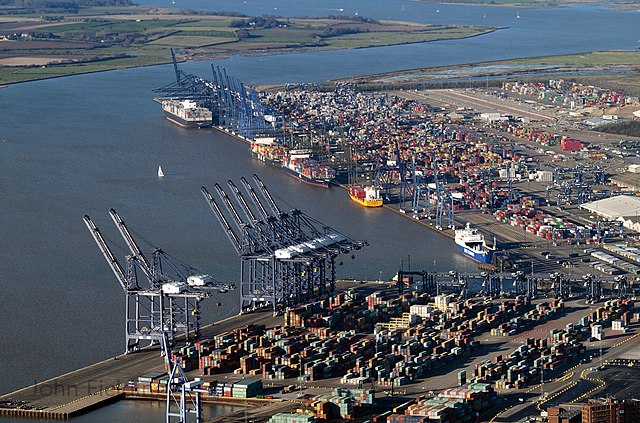-
Ongoing global supply chain issues, including port congestion at import ports, continue to pose a threat to Christmas deliveries to retailers
-
Felixstowe, one of the UK’s major container ports, is the latest to report congestion building amid a severe shortage of truck drivers to remove containers piling up in port storage yards
-
As many as 50,000 empty containers were reported to be at the port of Felixstowe, out of a total capacity of about 145,000
-
Currently, there are 334 container vessels that are waiting off ports globally, equating to a total of over 2.2 million TEUs
Aside from ports in the US, the Port of Felixstowe, one of the UK’s major container ports, is now also encountering congestion, as ongoing global supply chain issues continue to pose a threat to Christmas deliveries to retailers, according to a Vessels Value report.
Even as congestion is easing in major Chinese container ports such as Ningbo, with the number of vessels waiting more than halving since mid-August, congestion at import ports is now causing concern as ports struggle to clear containerized throughput, said Vessels Value, a leading online valuation and data provider.
Felixstowe is the latest to report congestion building, as a severe shortage of truck drivers means containers are piling up in port storage yards, making it increasingly difficult to unload containers and re-load empty containers back to Asian ports.
The majority of containers into the UK are transporting manufactured goods from export hubs in China, ranging from toys, fitness equipment, electricals and clothing to frozen food, with 40% of the UK’s containerized imports moving through the port.
Vessels are spending longer than usual at the Felixstowe port to unload and depart due to a pile-up of containers in port, causing disruptions to liner schedules and further reducing vessel availability.
Since the beginning of the month, 31 vessels have moved through Felixstowe, equating to a total of 281,408 TEUs of vessel capacity. This is 45% less than the same period in 2020, and 51% less than the same period in 2019, suggesting that the port is struggling with turnaround times.
The Guardian in a report last week said there were as many as 50,000 empty containers at the port of Felixstowe, out of a total capacity of about 145,000, although a spokesperson for the port said the situation was improving.
The spokesperson added: “We are working closely with all our shipping lines customers to accommodate their vessels. This can be challenging as a high proportion of ships are off schedule due to the well-publicized global supply chain issues and imports continue to arrive faster than the UK supply chain can handle them.”
The disruptions being seen could mean retailers struggle to fill their shelves this Christmas period because of the unsteady flow of containers moving through this major port and insufficient trucks to re-distribute the manufactured goods, said Vessels Value.
Some shipping lines have reported that they are diverting ships to other European ports to avoid the Felixstowe bottleneck and keep vessels moving. Marchen Maersk was sailing en route from Tanger Med, changing course from Felixstowe to Wilhelmshaven, Germany, on October 13 in a bid for a faster discharge.
Vessels Value said the Californian import ports Long Beach and Los Angeles remain among the worst affected ports, with significantly high congestion showing few signs of easing in the approach to Christmas, as record-high vessel counts anchor and drift off the port waiting to unload.
Currently, there are 334 container vessels that are waiting off ports globally, equating to a total of over 2.2 million TEUs, it added.
It continued: “Things that take longer tend to cost more, so being forced to make decisions to change vessel itineraries and getting held up in congested ports can be costly for shipping lines. Retailers also make the biggest proportion of the sales at this time of year, so if retailers struggle to source enough stock and profit margins lessen, we could see the price trickle back to the consumer.
“We may also see an increase in the use of alternative modes of transport to get products in stores, such as rail and air freight, although distribution issues are simultaneously impacting most parts of the supply chain,” the report concluded.
Photo by John Fielding





